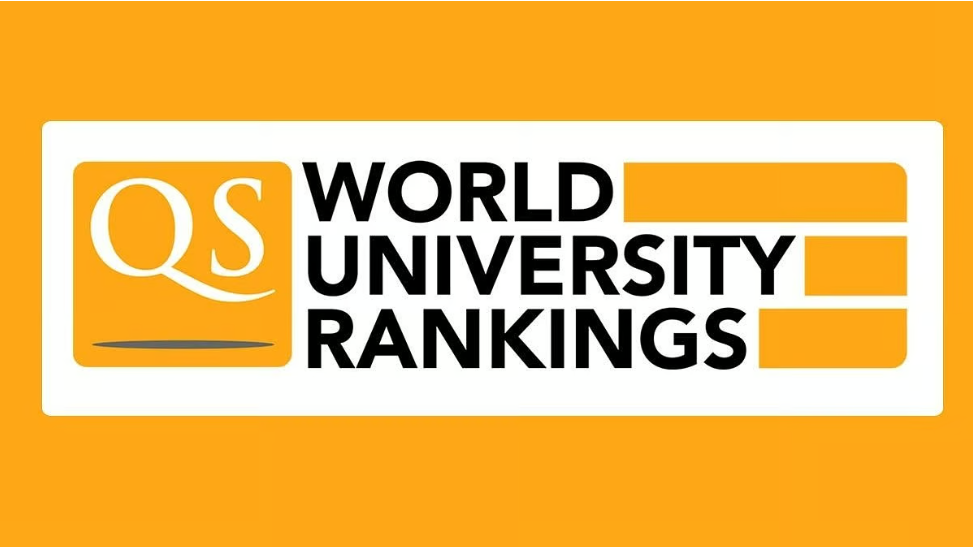Indian Universities Shine in QS World University Rankings 2025: A Detailed Overview

New Delhi, March 27, 2025 – Indian higher education institutions have once again made a significant mark on the global stage, as reflected in the QS World University Rankings 2025, released earlier this year by Quacquarelli Symonds (QS), a leading global higher education analytics firm. With a record 61% of Indian universities improving their rankings compared to the previous year, India’s academic landscape is witnessing a transformative phase, driven by enhanced research output, institutional reforms, and a growing international reputation. This news item provides an in-depth look at the performance of Indian universities, key highlights, challenges, and the broader implications for the country’s education sector.
Top Performers: IIT Bombay Leads the Charge
The Indian Institute of Technology Bombay (IIT Bombay) has emerged as the top-ranked university in India, climbing an impressive 31 places from 149th in 2024 to 118th globally in 2025. With an overall score of 56.3, IIT Bombay’s ascent is attributed to its strong academic reputation (58.5), employer reputation, and research productivity, as measured by citations per faculty. Following closely, IIT Delhi secured the second spot in India, advancing 47 ranks from 197th to 150th globally, with a score of 52.1. The Indian Institute of Science (IISc) Bengaluru rounded out the top three, moving up 14 positions from 225th to 211th, achieving a score of 45, bolstered by its exceptional research impact (99.9 in citations per faculty).
Other notable performers include IIT Kharagpur (222nd globally), IIT Madras (227th), and IIT Kanpur (263rd), all of which solidified their positions within the global top 300. The University of Delhi also made headlines, leaping 79 places from 407th to 328th, reflecting significant improvements in academic and employer perceptions. In total, 46 Indian universities were featured in the QS World University Rankings 2025, up from 41 in 2023, showcasing India’s growing presence in global higher education.
Regional Dominance: QS Asia Rankings 2025
In the QS Asia University Rankings 2025, released in November 2024, IIT Delhi overtook IIT Bombay to claim the top spot among Indian institutions, ranking 44th in Asia, while IIT Bombay followed at 48th. IIT Madras (56th), IIT Kharagpur (60th), IISc Bengaluru (65th), and IIT Kanpur (67th) also featured in the Asian top 100, with seven Indian universities securing positions in this prestigious bracket. India now boasts the highest number of ranked universities in Asia, with 308 institutions from the Southern Asia sub-region (including India and Pakistan) evaluated, underscoring the country’s expanding academic footprint.
Methodology and Metrics
The QS World University Rankings 2025 evaluated over 1,500 institutions across 105 higher education systems, analyzing 17 million research papers, 176 million citations, and insights from 175,798 academics and 105,476 employers. The rankings are based on nine key indicators: academic reputation (30%), employer reputation (20%), faculty-student ratio (10%), citations per faculty (20%), international faculty ratio (5%), international student ratio (5%), international research network (5%), employment outcomes (2.5%), and sustainability (2.5%). India’s performance was particularly strong in citations per faculty, with a national score of 37.8, surpassing the global average of 23.5, making it the second-highest in Asia among systems with more than 10 ranked universities.
However, challenges persist in internationalization. India’s scores for international faculty ratio (9.3) and international student ratio (2.9) remain well below global averages of 26.5 and 28.1, respectively, highlighting a need for greater global collaboration. The faculty-student ratio (16.2) also lags behind the global benchmark of 28.1, indicating resource constraints in teaching capacity.
Standout Achievements and Subject-Specific Excellence
In the QS World University Rankings by Subject 2025, released earlier this month, nine Indian institutions secured top-50 positions globally across various disciplines. The Indian School of Mines (ISM) Dhanbad led with a 20th-place ranking in Engineering – Mineral and Mining, while IIT Delhi (26th) and IIT Bombay (28th) excelled in the broader Engineering & Technology category. IIT Bombay also ranked 40th in Engineering – Mineral and Mining, and IIT Kharagpur followed at 45th. In Business and Management Studies, IIM Ahmedabad and IIM Bangalore maintained top-50 status, though both slipped slightly from last year’s positions.
Anna University stood out with a perfect score of 100 in citations per faculty, reinforcing India’s research prowess, while IISc Bengaluru (99.9) and IIT Guwahati (97.6) also demonstrated exceptional research impact. These achievements highlight India’s growing specialization in STEM fields and management education, key drivers of its global academic reputation.
Sustainability Rankings: A New Frontier
The QS Sustainability Rankings 2025, released in December 2024, further showcased India’s progress, with 78 Indian universities featured. IIT Delhi topped the list nationally, jumping 255 places to 171st globally with a score of 80.6, followed by IIT Kharagpur (202nd, 78.6) and IIT Bombay (234th, 76.1). The rankings, which assess environmental and social impact alongside governance, reflect a 34% improvement in Indian universities’ standings, with 21 new entrants. This surge aligns with national priorities under the National Education Policy (NEP) 2020, which emphasizes sustainable development in higher education.
Government and Institutional Response
Union Education Minister Dharmendra Pradhan hailed the rankings as a testament to India’s educational reforms, stating, “The consistent rise of Indian universities in global rankings reflects the transformative impact of NEP 2020 and our focus on research, innovation, and inclusivity.” Prime Minister Narendra Modi’s internationalization initiatives, including relaxed visa norms for foreign students and faculty, have contributed to a 318% increase in India’s representation in QS rankings over the past decade, outpacing G20 peers.
However, opposition leaders have cautioned against over-optimism. Congress MP Jairam Ramesh noted, “While the progress is commendable, the decline in faculty-student ratios and limited internationalization suggest systemic issues that need urgent attention.” Institutions like IIT Bombay and IISc have announced plans to expand faculty recruitment and international partnerships to address these gaps.
Challenges and Future Outlook
Despite the gains, India faces hurdles in maintaining its upward trajectory. The slight decline of IIT Indore (from 454th to 477th) serves as a reminder of uneven progress across institutions. Funding constraints, infrastructure deficits, and resistance to NEP’s multilingual and interdisciplinary mandates in some states, such as Tamil Nadu, pose ongoing challenges. Moreover, while India excels in research output, translating this into innovation and employability remains a work in progress, with only 55.6% of graduates securing jobs within a year, per recent industry reports.
Looking ahead, experts predict that sustained investment in digital infrastructure, as seen in Delhi’s 2025-26 budget with its ₹750 crore laptop scheme, and alignment with global sustainability goals could propel more Indian universities into the top 100 by 2030. Ben Sowter, QS Vice President, remarked, “India’s higher education ecosystem is forging ahead with remarkable momentum, positioning it as a global academic powerhouse.”
Conclusion
The QS World University Rankings 2025 paint a picture of a resurgent Indian higher education sector, with IITs, IISc, and other institutions leading the charge. As India cements its status as a hub of academic excellence, the focus must now shift to addressing structural weaknesses and ensuring equitable growth across its vast network of universities. For students, educators, and policymakers alike, these rankings are both a milestone and a call to action in the journey toward a “Viksit Bharat” (Developed India).
